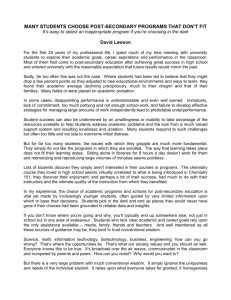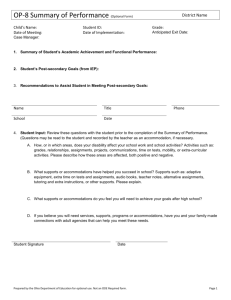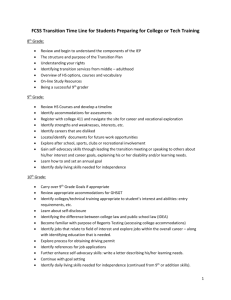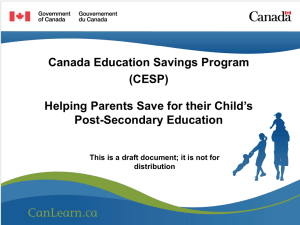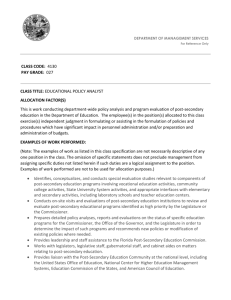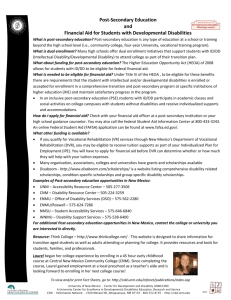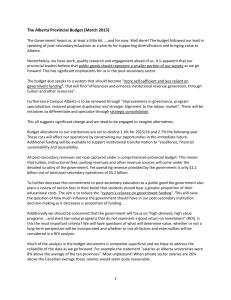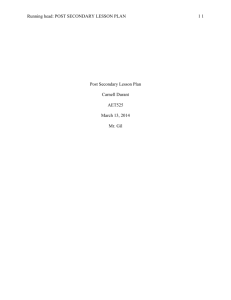Transition Planning Form for Special Education Students
advertisement
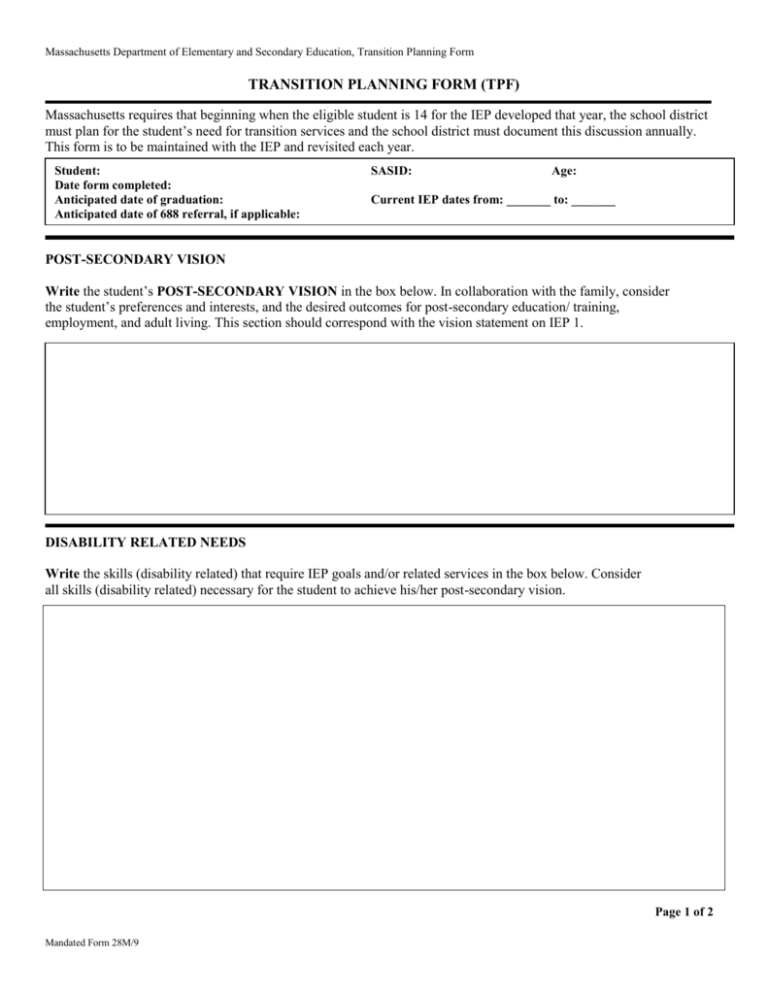
Massachusetts Department of Elementary and Secondary Education, Transition Planning Form TRANSITION PLANNING FORM (TPF) Massachusetts requires that beginning when the eligible student is 14 for the IEP developed that year, the school district must plan for the student’s need for transition services and the school district must document this discussion annually. This form is to be maintained with the IEP and revisited each year. Student: Date form completed: Anticipated date of graduation: Anticipated date of 688 referral, if applicable: SASID: Age: Current IEP dates from: _______ to: _______ POST-SECONDARY VISION Write the student’s POST-SECONDARY VISION in the box below. In collaboration with the family, consider the student’s preferences and interests, and the desired outcomes for post-secondary education/ training, employment, and adult living. This section should correspond with the vision statement on IEP 1. DISABILITY RELATED NEEDS Write the skills (disability related) that require IEP goals and/or related services in the box below. Consider all skills (disability related) necessary for the student to achieve his/her post-secondary vision. Page 1 of 2 Mandated Form 28M/9 Massachusetts Department of Elementary and Secondary Education, Transition Planning Form Student: __________________ Date form completed: ___________________ ACTION PLAN The ACTION PLAN should outline how the student can develop self-determination skills and be prepared both academically and functionally to transition to post-school activities in order to achieve his/her post-secondary vision. Indicate how Special Education/General Education, family members, adult service providers or others in the community will help the student develop the necessary skills. Disability related needs must also be stated on page 1. Develop the ACTION PLAN needed to achieve the POST-SECONDARY VISION by outlining the skills the student needs to develop and the courses, training, and activities in which the student will participate. Include information on who will help the student implement specific steps listed below in the Action Plan. Instruction: Is there a course of study or specific courses needed that will help the student reach his/her post-secondary vision? Consider the learning opportunities or skills that the student may need. This could include specific general education courses and/or special education instruction, career and technical education, and/or preparation for post-secondary outcomes such as vocational training or community college. Employment: Are there employment opportunities and/or specific skills that will help the student reach his/her post-secondary vision? Consider options such as part-time employment, supported job placement, service learning projects, participation in work experience program, job shadowing, internships, practice in resume writing/ interviewing skills, the use of a one-stop resource center and job specific skills in areas such as customer service, technology, etc. Community Experiences/ Post School Adult Living: Are there certain types of community and/or adult living experiences that will help the student reach his/her post-secondary vision? Consider options such as participation in community based experiences, learning how to independently access community resources, building social relationships, managing money, understanding health care needs, utilizing transportation options and organizational skills. Page 2 of 2 Mandated Form 28M/9
